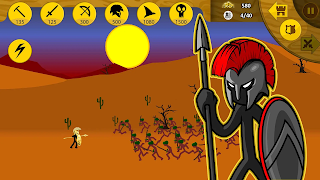Geometry Dash: Rhythm-Based Platforming Excellence
1. Origins and Development
Development Vision: Robert Topala aimed to create a platformer that combined challenging gameplay with a rhythmic soundtrack. The game’s visual style and level design were influenced by the desire to offer an experience that was both visually stimulating and musically synchronized.
Release and Reception: Upon its release, Geometry Dash received acclaim for its addictive gameplay and catchy soundtrack. It was praised for its challenging levels and tight controls. The game’s success led to several updates and expansions, including new levels, features, and a level editor.
2. Gameplay and Features
Rhythm-Based Levels: The core of Geometry Dash’s gameplay revolves around navigating through levels that are synchronized with the game’s soundtrack. Players must jump, fly, and avoid obstacles in time with the music, creating a challenging and immersive experience.
Level Editor: One of the standout features of Geometry Dash is its level editor, which allows players to create and share their own custom levels. This feature has led to a thriving community of creators who contribute to a vast library of user-generated content.
Difficulty and Progression: The game is known for its challenging difficulty, with levels that require precise timing and quick reflexes. Players progress through levels of increasing difficulty, unlocking new features and customization options along the way.
Visual and Audio Design: Geometry Dash features a distinctive visual style with colorful, geometric shapes and vibrant animations. The game’s soundtrack plays a crucial role in enhancing the rhythm-based gameplay, with a variety of electronic tracks that complement the action.
Achievements and Leaderboards: The game includes various achievements and leaderboards, adding a competitive element to the gameplay. Players can compete for high scores and completion times, further enhancing the game’s replayability.
3. Impact and Legacy
Stick War: Legacy: Tactical Battles with Stick Figures
1. Origins and Development
Development Goals: Max Games Studios aimed to create a strategy game that combined tactical depth with accessible stick-figure graphics. The game’s design focuses on providing engaging battles and strategic challenges.
Release and Reception: Stick War: Legacy was well-received for its engaging gameplay and strategic elements. Players appreciated the game’s balance of strategy and action, as well as its user-friendly controls and progression system.
2. Gameplay and Features
Strategic Battles: The game is centered around commanding an army of stick figures in strategic battles against various opponents. Players must manage resources, deploy units, and make tactical decisions to achieve victory.
Unit Types and Upgrades: Stick War: Legacy features a variety of unit types, each with unique abilities and strengths. Players can upgrade their units and unlock new technologies to improve their chances in battle.
Campaign Mode: The game includes a campaign mode with a series of progressively challenging missions. Players must complete objectives and defeat enemies to advance through the campaign and unlock new content.
Multiplayer Mode: In addition to the single-player campaign, Stick War: Legacy offers multiplayer modes where players can compete against each other in real-time battles. This adds a competitive element and encourages players to refine their strategies.
Visual and Audio Design: The game uses simple stick-figure graphics and straightforward animations, which contribute to its accessible and easy-to-understand gameplay. The audio design includes sound effects and music that complement the action.
Progression and Achievements: Players can earn rewards and achievements by completing missions and achieving high scores. The progression system allows players to unlock new units and upgrades as they advance through the game.
3. Impact and Legacy
Comparing Geometry Dash and Stick War: Legacy
Gameplay Focus: Geometry Dash is centered around rhythm-based platforming, challenging players to navigate through levels synchronized with the music. Stick War: Legacy focuses on strategic battles and tactical decision-making, allowing players to command armies and manage resources.
Visual Style: Geometry Dash is known for its vibrant, geometric visuals and colorful animations, while Stick War: Legacy employs simple stick-figure graphics and straightforward designs. Both games use their visual styles to enhance their gameplay experiences.
Community and User-Generated Content: Geometry Dash features a strong level editor and a thriving community of creators, contributing to a vast library of user-generated content. Stick War: Legacy focuses more on its campaign and multiplayer modes, with less emphasis on user-generated content.
Difficulty and Challenge: Geometry Dash is renowned for its challenging levels and rhythm-based gameplay, requiring precise timing and reflexes. Stick War: Legacy offers strategic depth and tactical challenges, requiring players to make strategic decisions and manage resources effectively.
Conclusion
Geometry Dash and Stick War: Legacy represent two distinct approaches to gaming, each offering its own unique set of features and experiences. Geometry Dash excels in rhythm-based platforming with its engaging levels and vibrant visuals, while Stick War: Legacy stands out for its tactical depth and strategic battles. Both games have made significant contributions to their respective genres, providing players with memorable and engaging experiences. Whether navigating through challenging platforming levels or commanding armies in strategic battles, players can find excitement and enjoyment in these two standout titles.

.jpg)






.jpg)
